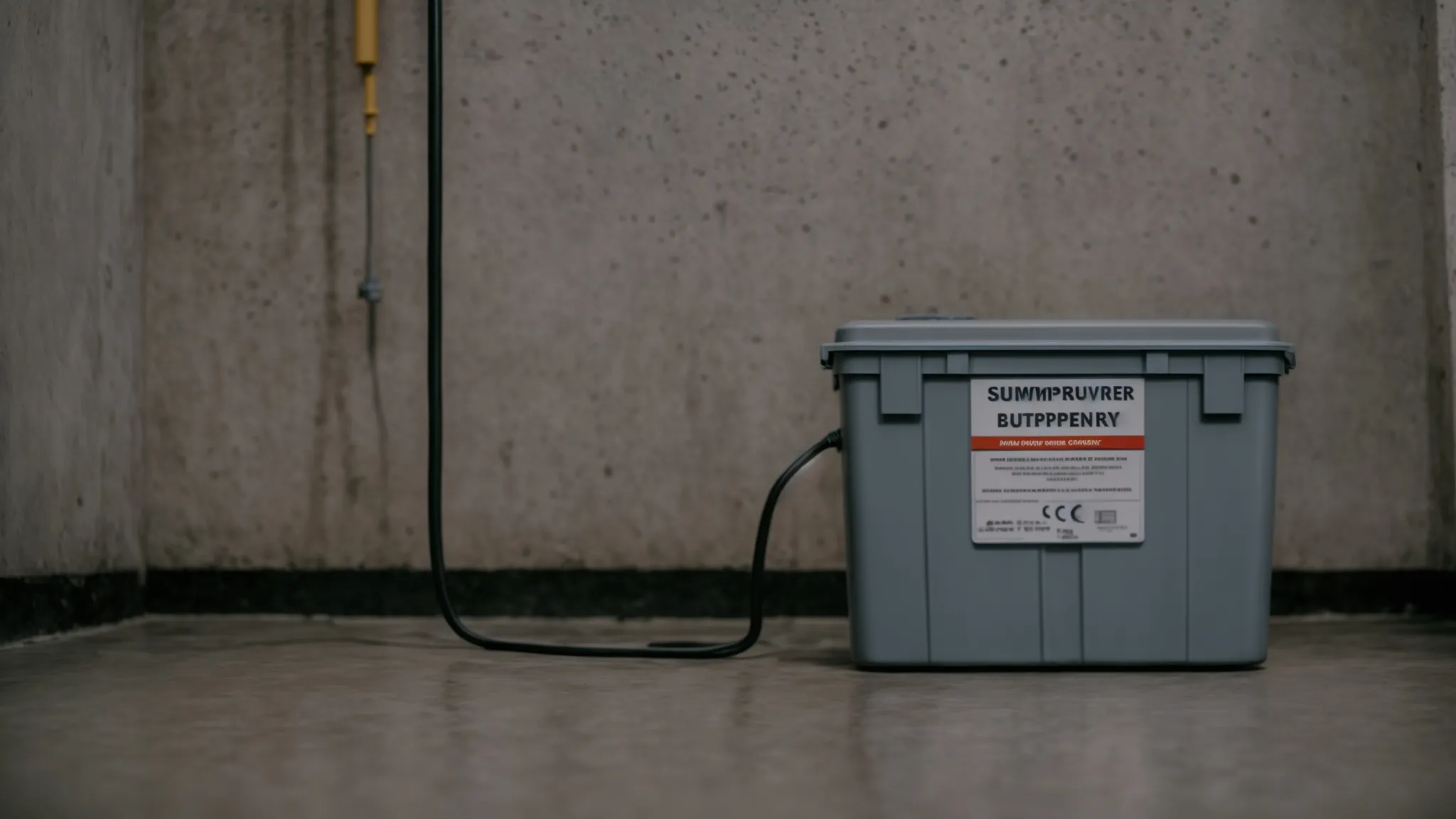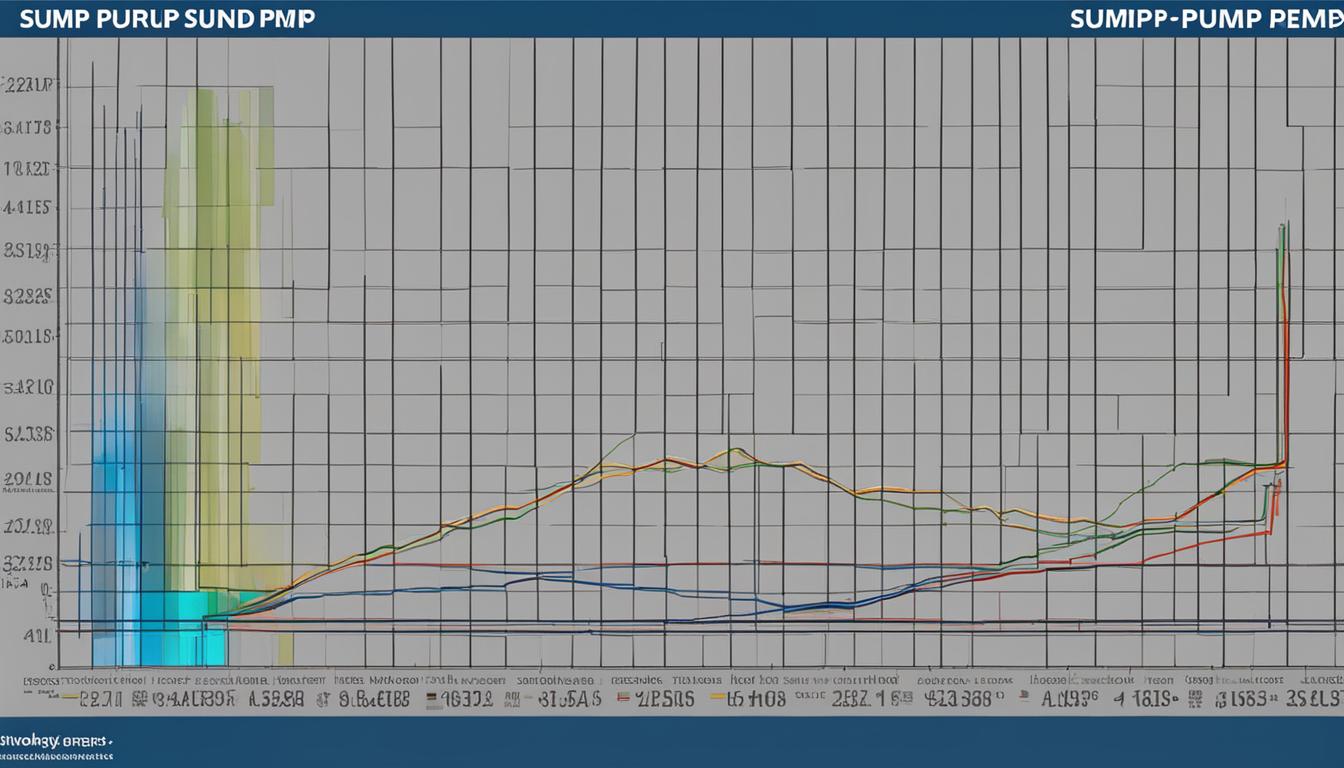Proper maintenance of your septic tank is essential for avoiding costly repairs and ensuring that your system runs smoothly year-round. Establishing a regular septic tank treatment schedule is an effective way to take care of your system and prevent problems from arising.
In this section, we will provide you with 13 tips for maintaining a regular schedule for septic tank treatment. By following these tips, you can optimize the health of your septic system and ensure it runs smoothly throughout the year.
Key Takeaways:
- Scheduling regular septic tank treatment is crucial for system health.
- Proper maintenance can help prevent costly repairs.
- Following our 13 tips can optimize your septic system’s health.
- A regular schedule will help ensure your system runs smoothly year-round.
- Don’t neglect your septic system’s maintenance needs.
Importance of Regular Septic Care Routine
At our septic system maintenance company, we cannot emphasize enough the importance of establishing and maintaining a regular septic care routine. Regular maintenance is the cornerstone of a healthy and long-lasting septic system.
Without regular care, your septic system is likely to develop problems that can lead to costly repairs and potentially hazardous conditions. A well-maintained septic system, on the other hand, can last for many years and provide worry-free service.
Why Regular Care is Essential for Your Septic System
A septic system is a complex and delicate piece of equipment that requires regular attention to ensure proper functioning. Regular care helps to prevent problems such as clogged pipes, overflowing tanks, and backup into your home or business.
Without regular care, your septic system is also more susceptible to costly damage caused by tree roots, heavy machinery, and other unexpected occurrences. Regular maintenance allows you to identify potential problems before they become major issues, saving you time, money, and stress in the long run.
Benefits of Regular Septic System Care
The benefits of establishing and maintaining a regular septic care routine are numerous. Some of the key advantages include:
- Preventing costly repairs and replacement
- Keeping your property free of unpleasant odors and backups
- Ensuring the health and safety of your family, employees, or customers
- Protecting the environment by avoiding leaks and contamination
How to Establish a Regular Septic Care Routine
Establishing a regular septic care routine is easier than you might think. At our company, we recommend scheduling regular inspections and pumping as well as practicing good septic system habits such as conserving water, avoiding harsh chemicals, and disposing of waste properly.
In addition, we suggest keeping detailed records of your inspections and maintenance activities, including dates, services performed, and any observations or concerns. These records can help you identify patterns or issues that require further attention and ensure that you are staying on track with your maintenance schedule.
“A septic system is like a car in that it requires regular care to perform at its best. At our company, we are committed to helping our customers establish and maintain a regular septic care routine so they can enjoy worry-free service and a healthy septic system for years to come.”
Understanding LSI for Septic Tank Treatment Scheduling Tips
When creating a septic tank treatment schedule, it’s important to consider Latent Semantic Indexing (LSI) and how it can assist you in optimizing the health of your septic system. LSI is a sophisticated algorithm that can identify semantically related keywords and help you develop a more effective treatment schedule.
LSI recognizes that words can have multiple meanings, so it looks for related words that can help determine the context in which a particular word is being used. This can help you develop a more thorough treatment plan that addresses all aspects of your septic system.
Using LSI for Septic Tank Treatment Scheduling Tips
One way to use LSI for septic tank treatment scheduling is to identify keywords related to your treatment plan. For example, if you’re planning to use bacteria-based treatments, LSI could help identify related keywords such as “microbes,” “enzymes,” and “digestion.” This can help you develop a treatment plan that addresses all aspects of septic system health.
Another way to utilize LSI is to consider the broader context of your septic system. By looking at semantically related terms such as “drain field,” “leach field,” and “septic drain field,” you can gain a more holistic view of your septic system and develop a comprehensive treatment plan.
| LSI for Septic Tank Treatment | Example keywords |
|---|---|
| Tank maintenance | Pumping, cleaning, inspection |
| Drain field | Leach field, septic drain field |
| Microbial treatments | Enzymes, digestion, bacteria |
LSI can assist you in identifying the most relevant and effective keywords for your septic treatment plan. This will help optimize the treatment schedule and ensure the longevity and health of your septic system.
By incorporating LSI into your septic tank treatment scheduling, you can develop a more effective and comprehensive treatment plan. With a better understanding of related terms and keywords, you can optimize the health of your septic system and ensure that it operates smoothly throughout the year.
Utilizing Neural Matching for Effective Septic Care Scheduling
When it comes to establishing an effective septic care schedule, utilizing neural matching techniques can be an incredibly valuable tool. Neural matching is a powerful approach that uses machine learning to help identify patterns and optimize decision-making based on those patterns. Neural matching can help you establish a septic care routine that is tailored to your specific needs, ensuring optimal performance and longevity for your septic system.
At its core, neural matching involves training a machine learning algorithm to recognize patterns in data. In the context of septic care scheduling, this might involve analyzing data related to the age and condition of your septic system, as well as factors like water usage and soil type. By identifying patterns in this data, a neural matching algorithm can help you identify the optimal time to perform various septic care tasks, such as tank pumping or filter cleaning.
One key advantage of using neural matching for septic care scheduling is that it can help you optimize your routine over time. By continually analyzing data and updating your schedule based on new insights, you can ensure that your septic system remains healthy and functional for years to come. Additionally, because the algorithm is designed to identify patterns in data, it can help you identify potential issues before they become serious problems, allowing you to address them proactively and avoid more costly repairs down the line.
Of course, while neural matching can be an incredibly useful tool for septic care scheduling, it is important to keep in mind that it is not a silver bullet. To get the most out of neural matching, it is important to work with a professional who can help you design and implement an effective data collection and analysis system. Additionally, it is important to remain vigilant and proactive in your septic care routine, even if you are using a neural matching algorithm to help guide your decisions.
Overall, utilizing neural matching for effective septic care scheduling can be an incredibly valuable tool. By analyzing patterns in data and optimizing your septic care routine over time, you can ensure optimal performance and longevity for your septic system, while avoiding costly repairs and other potential issues.
Semantically Relevant Septic System Care Recommendations
Properly maintaining your septic system is crucial for its long-term health and functionality. To help you optimize your septic care routine, we have compiled a list of semantically relevant recommendations that you should implement:
- Regular Pumping: It is recommended that you have your septic tank pumped every 3-5 years, depending on the size of your household. Regular pumping helps prevent solids from building up and clogging your system, ensuring it operates efficiently.
- Water Conservation: Conserving water is one of the most effective ways to extend the lifespan of your septic system. Reduce your household water usage by fixing leaks, installing low-flow showerheads and toilets, and spreading out laundry and dishwashing loads.
- Proper Disposal: Avoid flushing anything besides human waste and toilet paper down your toilets. Do not pour grease, oil, or chemicals down your drains, which can damage your system and contaminate groundwater.
- Regular Inspections: Having your septic system inspected annually by a professional can help detect and prevent potential issues from escalating. Regular inspections also ensure that your system complies with state regulations and guidelines.
- Vegetation Management: Plant trees and shrubs away from your septic system to prevent root intrusion, which can cause damage to your pipes and tank.
- Emergency Preparedness: In case of an emergency, know where your septic system is located, and have it marked and easily accessible. Keep a record of system maintenance and repair, have an emergency kit on hand, and identify a reputable septic service provider in your area.
By following these semantically relevant septic system care recommendations, you can help ensure your system operates efficiently, extends its lifespan, and saves you money in the long run.
Establishing a Septic Tank Treatment Schedule that Works
Creating a regular septic tank treatment schedule is essential for keeping your septic system in good working condition. However, establishing a schedule that works for your specific needs can be challenging. In this section, we will provide you with a step-by-step guide to creating a practical and effective septic tank treatment schedule.
Step 1: Determine the Size of Your Septic Tank
The size of your septic tank plays a crucial role in determining how often you should schedule maintenance. A smaller tank will require more frequent maintenance than a larger one. Determine the size of your tank by consulting your home’s blueprint or contacting a septic system professional.
Step 2: Consider Household Size and Water Usage
The number of people living in your home and their water usage habits will also affect your treatment schedule. As a general rule, a family of four in a 3-bedroom house will need to have their septic tank pumped every 3-5 years. If you have more people in your household or use more water, you may need to have your tank serviced more often.
Step 3: Identify the Type of Septic System You Have
There are two main types of septic systems: conventional and alternative. Conventional systems use a septic tank and a drain field to treat wastewater. Alternative systems, such as aerobic treatment units or mound systems, require more frequent maintenance. Knowing the type of system you have will help you determine the appropriate maintenance schedule.
Step 4: Consult with a Professional
Consulting with a septic system professional can provide valuable insights into establishing a treatment schedule that works for your specific needs. They can help you determine the appropriate frequency of maintenance, identify any potential issues, and ensure that your system remains in good working condition.
Step 5: Stick to a Regular Schedule
Consistency is key when it comes to septic tank treatment. Once you have established a schedule that works for your household and system, stick to it. Skipping maintenance appointments can lead to costly repairs and potential system failures.
Step 6: Incorporate Best Practices for Septic Tank Treatment
Integrating best practices for septic tank treatment can enhance the effectiveness of your maintenance schedule. These practices include reducing water usage, avoiding flushing harmful substances, and implementing a regular inspection routine.
Pro Tip: Keeping a detailed record of your maintenance schedule can help you stay on track and ensure that your septic system remains in good working condition.
Establishing a septic tank treatment schedule that works for your specific needs requires careful consideration of your system, household size, and water usage habits. By following these steps and incorporating best practices, you can optimize the health of your septic system and avoid costly repairs.
Importance of Consistency in Septic Tank Treatment Schedule
One of the most critical factors in maintaining a healthy septic system is consistency in your septic tank treatment schedule. A regular septic tank treatment schedule is essential to optimize the efficiency and effectiveness of your septic system, preventing it from developing issues that could be costly and time-consuming to fix.
By adhering to a regular septic tank treatment schedule, you can ensure that your system’s bacterial balance remains in check. The bacterial balance is key to breaking down waste in your septic system, and if it gets disturbed, it could cause your system to malfunction or even fail.
When it comes to septic tank treatment schedules, consistency is key. Many individuals make the mistake of treating their septic tank sporadically or only when they notice an issue. Irregular treatment can lead to issues and even wastewater backing up into your home. Our septic system care recommendations stress the importance of a regular septic tank treatment schedule as a preventative measure.
Monthly, Quarterly or Annual Schedule
The right schedule depends on several factors, such as the size of your septic system and the number of people in your household. A good rule of thumb is to have your septic system inspected annually and have your tank pumped every 3-5 years.
Our best practices for septic tank treatment include establishing a schedule that works best for your system and sticking to it. A monthly, quarterly or annual schedule will ensure that your septic tank is well-maintained throughout the year.
Tracking Your Septic Tank Treatment Schedule
It’s important to keep track of your septic tank treatment schedule to ensure consistency and effectiveness. One way to track your schedule is to create a table that outlines the frequency of each treatment. The table should include the dates of each treatment, the type of treatment, and any specific instructions or notes.
| Date | Treatment | Notes |
|---|---|---|
| January 1, 2022 | Septic Tank Treatment | Flushed system with 5 gallons of septic tank treatment. |
| April 1, 2022 | Septic System Inspection | Inspector found no issues with the system. |
| July 1, 2022 | Septic Tank Pumping | Tank was pumped by a licensed professional. |
A table like this will help you keep track of your septic tank treatment schedule and ensure that you are staying consistent with your treatments. By following a regular schedule, you can optimize the health of your septic system and avoid costly repairs or replacements.
Overall, consistency in your septic tank treatment schedule is crucial to maintaining a healthy septic system. By following our septic tank treatment scheduling tips, you can create a schedule that works best for your system and ensure that it remains in top condition throughout the year.
Best Practices for Septic Tank Treatment
When it comes to maintaining a healthy septic system, there are certain best practices that can help optimize the effectiveness of your treatment routine. By following these practices, you can prevent potential issues and ensure your septic tank treatment schedule runs smoothly.
1. Pump Your Tank Regularly
Regular pumping ensures that the solids in the tank don’t accumulate and cause blockages or overflow. It’s recommended to get your tank pumped every 3-5 years depending on the size of your household and tank.
2. Use Water Efficiently
Excessive water usage can lead to overloading the septic system and cause it to fail. To reduce water usage, fix any leaks, install low flow fixtures, and avoid running multiple water appliances at the same time.
3. Properly Dispose of Waste
Only flush waste and toilet paper down your toilet. Never flush anything else, including feminine hygiene products, dental floss, wipes, or grease. Additionally, avoid pouring chemicals or non-biodegradable substances down your drains.
4. Maintain Your Drainfield
Ensure that nothing is planted on or over your drainfield as roots can damage the pipes. Additionally, avoid parking vehicles or heavy machinery over the drainfield. Finally, never cover the drainfield with concrete or any other material.
5. Maintain Your Tank’s Health
Keep your tank healthy by avoiding the use of chemical additives or septic tank cleaners that can harm the tank’s natural bacteria. Additionally, never open the tank lid, as it can have dangerous gases or cause the tank to collapse.
6. Inspect and Repair as Necessary
Regularly inspect your septic system for any signs of damage or malfunction. If you notice any issues, call a professional to repair them immediately. Ignoring problems can cause significant damage and be costly to fix.
By following these best practices, you can ensure your septic tank remains healthy and avoid costly repairs or replacements. Remember, regular maintenance and care are crucial to the longevity and effectiveness of your septic system.
Common Mistakes to Avoid in Septic Tank Treatment Schedule
When it comes to maintaining a septic tank system, regular care and treatment are crucial for optimal performance and longevity. However, there are several common mistakes that homeowners often make when establishing a septic tank treatment schedule. These mistakes can lead to various issues and costly repairs over time. In this section, we will discuss these mistakes and how to avoid them.
1. Ignoring Signs of Septic System Issues
One of the most common mistakes homeowners make is ignoring signs of septic system issues. These may include slow drains, foul odors, gurgling sounds, and sewage backups. Ignoring these warning signs can lead to more severe problems down the line. It is essential to address any issues as soon as they arise and to consult with a professional septic service provider.
2. Overusing or Misusing the Septic System
Another common mistake is overusing or misusing the septic system. Using too much water, flushing non-biodegradable items, and pouring chemicals down the drain can all lead to clogs, backups, and other problems. It is crucial to use the septic system properly by conserving water, disposing of waste correctly, and avoiding harmful chemicals.
3. Neglecting Regular Maintenance
Neglecting regular maintenance is another common mistake that homeowners make. It is important to have the septic system inspected and pumped regularly to remove sludge and prevent backups. The frequency of pumping depends on the size of the tank and the number of occupants in the household. Neglecting regular maintenance can lead to costly repairs and even system failure.
4. Using DIY Products and Treatments
Using DIY products and treatments can also cause more harm than good. Many DIY treatments are not effective, and some can even damage the septic system. It is important to consult with a professional service provider and use only approved treatments and products.
5. Disregarding Local Regulations
Disregarding local regulations is another common mistake that homeowners make. Every state and county has different regulations regarding septic systems, including the frequency of pumping, permitted additives, and system design. It is important to research and follow these regulations to avoid fines and other legal issues.
By avoiding these common mistakes, homeowners can establish and maintain an effective septic tank treatment schedule. Regular care and maintenance are essential for the health and longevity of the septic system. Consult with a professional service provider for further guidance and support.
Conclusion
In conclusion, establishing and maintaining a regular septic tank treatment schedule is essential for the health and longevity of your septic system. By following the 13 tips we’ve provided, you can optimize the effectiveness of your septic care routine and prevent potential issues from arising.
We’ve discussed the importance of regular septic care routine and how it can ensure the proper functioning of your septic system. We’ve also explored the concept of Latent Semantic Indexing (LSI) and neural matching techniques and how they can help you create a customized and effective septic tank treatment schedule.
Additionally, we’ve provided semantically relevant recommendations and best practices to ensure you are taking the right steps to maintain a healthy septic system. By avoiding common mistakes and maintaining consistency in your septic tank treatment schedule, you can prevent costly repairs and ensure a long life for your septic system.
Overall, our goal is to provide you with the knowledge and tools necessary to establish a practical and effective septic tank treatment schedule. By doing so, you can ensure the health and proper functioning of your septic system for many years to come. Thank you for reading and best of luck in your septic care journey.
FAQ
What is the regular septic tank treatment schedule?
The regular septic tank treatment schedule typically involves treating your septic system every three to five years. However, the frequency may vary depending on factors such as the size of your tank, the number of occupants in the household, and water usage.
How can I maintain a regular schedule for septic tank treatment?
To maintain a regular schedule for septic tank treatment, it is recommended to keep track of the date of your last treatment and set reminders for the next one. You can also hire a professional septic system service provider to handle the scheduling and treatment for you.
What are the benefits of following a regular septic care routine?
Following a regular septic care routine ensures the proper functioning of your septic system, prevents costly repairs or replacements, avoids backups or clogs, and promotes a healthy environment. It also prolongs the lifespan of your septic system.
How does Latent Semantic Indexing (LSI) help in septic tank treatment scheduling?
Latent Semantic Indexing (LSI) helps in septic tank treatment scheduling by analyzing the context and meaning of words related to septic tank treatment. It helps identify relevant keywords and topics that can optimize the scheduling process and improve the overall health of the septic system.
How can neural matching techniques enhance septic care scheduling?
Neural matching techniques can enhance septic care scheduling by using artificial intelligence and machine learning algorithms to analyze patterns and make accurate predictions. This can help optimize the scheduling process, improve efficiency, and ensure timely and effective septic tank treatments.
What are some semantically relevant recommendations for septic system care?
Some semantically relevant recommendations for septic system care include regular inspections, proper waste disposal, conserving water, avoiding harsh chemicals, maintaining a healthy bacterial balance, and pumping the septic tank as needed.
How can I establish a septic tank treatment schedule that works for me?
To establish a septic tank treatment schedule that works for you, consider factors such as the size of your tank, the number of occupants in your household, water usage, and local regulations. Consult a professional if you need assistance in creating a personalized schedule.
Why is consistency important in a septic tank treatment schedule?
Consistency is important in a septic tank treatment schedule because it ensures that your septic system receives the necessary maintenance on a regular basis. Consistent treatment helps prevent issues such as clogs, backups, and system failures, promoting the longevity and proper functioning of the septic system.
What are some best practices for septic tank treatment?
Some best practices for septic tank treatment include regular inspections, pumping the tank as needed, using water-efficient fixtures, avoiding flushing non-biodegradable items, practicing proper waste disposal, and being mindful of chemical usage.
What are some common mistakes to avoid in a septic tank treatment schedule?
Some common mistakes to avoid in a septic tank treatment schedule are neglecting regular maintenance, overloading the system with excessive water usage, flushing non-biodegradable items, using harsh chemicals, and ignoring warning signs of potential issues. It is important to be proactive and address any concerns promptly.






